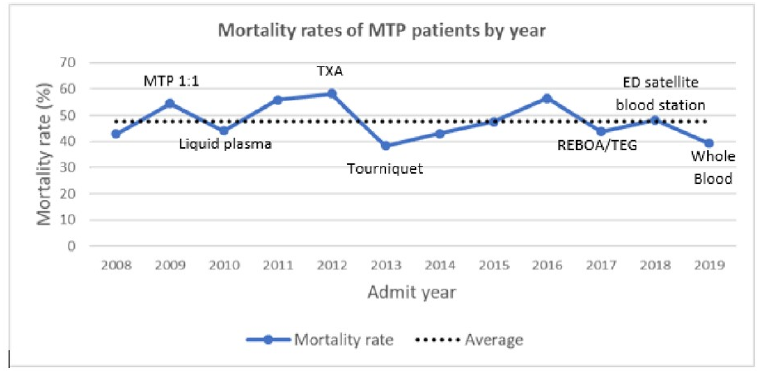Over the years, the operative vs nonoperative management pendulum has swung to and fro. For solid organ injuries, operative management was routine until about 30 years ago. Since then, it has moved to the opposite end of the spectrum.
Similar swings have occurred in pediatric trauma management as well. Most notably it now involves that most dreaded of organs, the pancreas. In adults, this remains a problem for the operating room. But for the past 6-8 years, pediatric trauma surgeons have been dabbling with “conservative” management of pancreatic injuries.
The group at Baylor designed a prospective, multicenter study of seven pediatric trauma centers over a 2 year period. They specifically reviewed children with pancreatic injury with duct disruption (grade III). The injuries needed to be reasonably “fresh” (48 hours). They managed these children with a “Less is More” practice guideline that included early oral feeding, limited imaging and labs, and discharge based on improved symptoms. They compared their results to a previous multicenter trial performed 3-5 years earlier, before guideline implementation.
Here are the factoids:
- There were 11 patients enrolled (!!) with a median age of 7 years
- Clear liquids were started an average of 3.5 days postop, and a low fat diet at 6.7 days. Three patients (27%) failed to advance, requiring TPN.
- ERCP stent was placed in 3 patients (27%)
- Mean length of stay was 10 days
- The authors pointed out that these numbers were all better than their published study prior to the “Less is More” guideline
Here are my comments: Unfortunately, I remember back to the days when any pancreatic injury with a duct injury, adult or child, went to surgery. For the usual, run of the mill tail transections from a handlebar injury, a quick tail resection was in order. The kids did well and were generally out of the hospital quickly (3-5 days) with few complications. I’ve operated on a handful of them, and this has been my (anecdotal) experience as well.
My concern is that, in this study, less (defined as nonop management) leads to more time to full diet, more collections and pseudocysts, and more time in the hospital.
In order to determine this, we need to know exactly how injured these 11 children were, details of their pancreatic injury, and a great deal about the data from the earlier study. And I would be very surprised if there is sufficient statistical power to show a true difference based on only 11 patients.
Here are my questions for the authors and presenter:
- Could some of the observed differences be due to varying grades of pancreatic injury? The abstract does not divide the kids by grade, so it is possible that some are grade III, some IV, and some are V. This makes it very difficult to tease reliable conclusions from this very small number of subjects (11).
- Did they have other injuries as well that may have contributed to their slow recovery?
- Have you compared your results to older research that analyzed these same variables for pediatric patients who were treated with pancreatic resection + drainage? Be prepared to compare your data to older studies, as well as to explain the details of your own historical study cited in the abstract.
- It seems that trauma surgeons are becoming more reluctant to operate on kids. But for this injury, is that wise? Yes, the kid ends up with a scar on his abdomen. And may be missing his spleen. But what is the emotional trauma from having a tube stuck in your nose, a drain stuck in your side, or spending two weeks in the hospital? And maybe coming back for more touch-ups? Is this really better then a short one-time stay in the hospital.
There will be a lot of interest in your paper at the meeting. I can’t wait to hear you present it live!
Reference: Outcomes of standardized non-operative management of high-grade pnacreatic trauma in chilren: a study from the Pediatric Trauma Society Pancreatic Trauma Study Group. AAST 2020 Oral Abstract #6.


